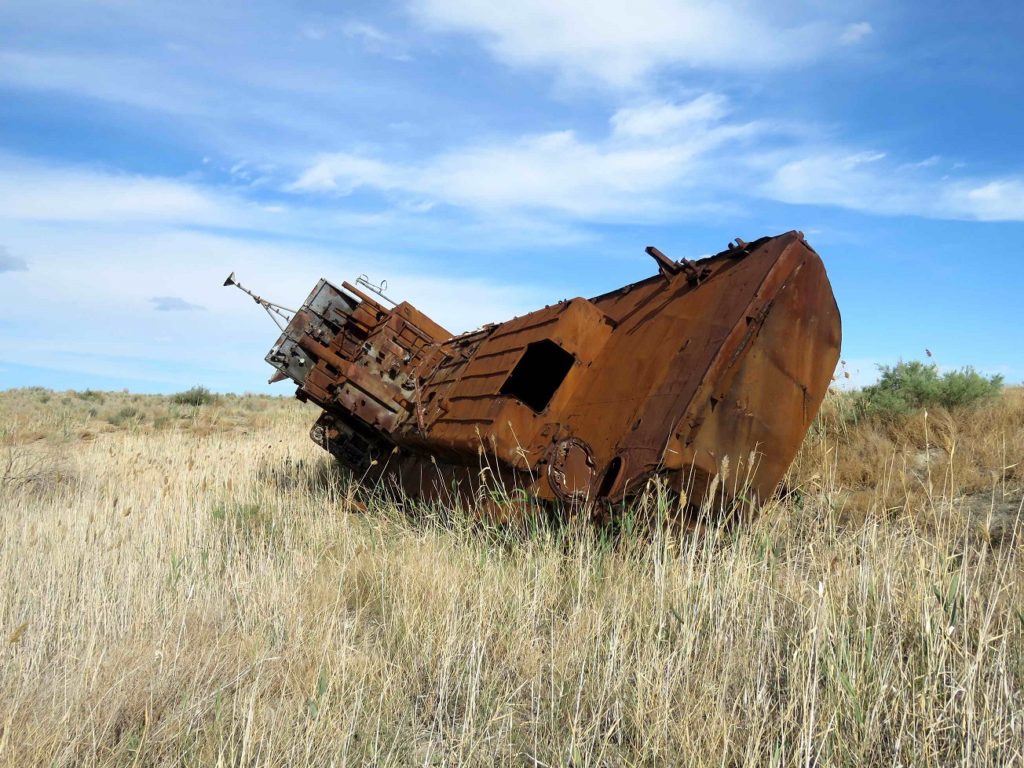The Aral Sea crisis is widely considered one of the greatest man-made environmental disasters of our time. However, a host of new initiatives have recently emerged – featuring widespread international collaboration – which aim at transforming the Aral Sea region in Uzbekistan economically and environmentally, and returning it to former glories.
Researchers from the Durrell Institute of Conservation and Ecology at the University of Kent, along with Uzbek partners and a team of researchers from the Saiga Conservation Alliance have been awarded a UK Government Darwin Initiative/Defra grant for a project titled “Resurrection Island: enterprise, conservation and development around the Aral Sea”. The project will lay the foundation for designating Resurrection Island (a former island in the Aral Sea), and surrounding lands as a Protected Area, in order to conserve its unique biodiversity, such as the critically endangered saiga antelope, while developing sustainable new income streams (including tourism). This will enable local residents to benefit, and help ensure industrial development results in ‘no net loss’ of biodiversity.
“The Aral Sea region has absolutely fascinating history, culture, and wildlife – and yet is widely known as the site of one of the worst environmental disasters of recent decades. This funding presents an excellent opportunity to support and expand ongoing efforts to reverse the fortunes of this unique part of the world”.
Joseph Bull, programme lead based at the University of Kent
Following Soviet-era irrigation for cotton, the Aral Sea itself has all but disappeared. As a result, the surrounding region is highly environmentally degraded, and important industries such as fishing were decimated. Yet there is reason for hope in the form of substantial economic and ecological potential; the Aral region contains major cultural, historic, natural, and industrial assets. The challenge now is to realise this potential in a sustainable way, bringing government, industry, and communities together to turn this area from a symbol of despair into one of regeneration.
Elena Bykova, Co PI and Saiga Conservation Alliance lead in Uzbekistan is enthusiastic about working with local and national government to shape her country’s biodiversity strategy: “I’ve been working in conservation in Uzbekistan for over 20 years now, but this new programme will bring about a real step-change in conserving Uzbekistan’s last remaining saiga population, as well as other endangered species in the region”.
In May 2021, by the initiative of the President of the Republic of Uzbekistan Mirziyoyev Sh.M., the UN General Assembly declared the Aral Sea region ‘a zone of ecological innovations and technologies’, and the Government of Uzbekistan is actively cooperating with international partners to develop an Integrated Roadmap for the sustainable development of the region.
“This is an extremely important initiative. Though there are ongoing efforts to improve living standards and economic opportunities for the residents of the Aral Sea region, there is much work still to be done. The project will be important in bringing international best practice expertise and training for long-term capacity building on biodiversity. Increasing numbers of international tourists to Uzbekistan is another national priority, with which the project is entirely aligned”.
Uzbekistan’s Ambassador to the UK Said Rustamov
Projects such as these demonstrate the importance that the Government of the Republic of Uzbekistan places upon the Aral Sea region as an engine of sustainable development, and the degree to which they are willing to work with global partners to achieve that goal. Equally, there is recognition that Uzbekistan has a huge amount to attract both domestic and international tourists beyond its famous Silk Road cities.
After challenges in recent decades, the people and wildlife of the Aral Sea region can look to the future with cautious optimism.


